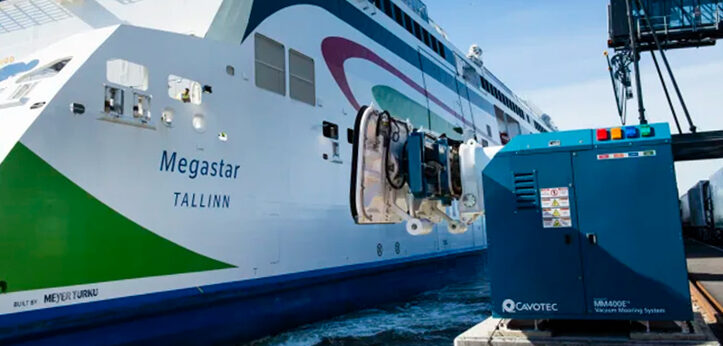An automated system for mooring ships deployed by the Port of Helsinki has been estimated by DNV GL Maritime Advisory to significantly reduce carbon dioxide and NOX emissions. Calculations using a new port efficiency tool developed by DNV indicate that the port’s use of a MoorMaster automated mooring system reduces vessel fuel consumption by up to 2,800 tons every year, resulting in almost 8,000 tons less carbon dioxide released into the atmosphere. The system also reduces NOX emissions by up to 70 tons a year, of which 16 tons is at the berth in the city center.
“The Port of Helsinki is committed to reducing the carbon footprint of harbor operations through its Carbon Neutral program. Auto-mooring systems at the busiest berths play a vital part in the successful reduction of vessels’ carbon emissions. As our passenger terminal is centrally located, near residential areas, reducing the impact of harbor operations is of the utmost importance to us,” said Antti Pulkkinen, harbormaster, passenger services, Port of Helsinki.
DNV GL Maritime Advisory has developed the tool on behalf of Cavotec, the maker of the MoorMaster systems, to help ports estimate the environmental benefits of automated mooring. “We’re delighted to work with Cavotec on this study. At DNV GL, we’re always looking for new ways to apply our expertise to help the industry adopt more environmentally friendly technologies,” added Christine Adal, head of section, shipping advisory at DNV GL.
MoorMaster has been in use at a ro-pax berth in the Port of Helsinki since 2016, and another system will be installed in 2021. The connecting berths in Tallinn, Estonia, will also be equipped with the system, enabling vessels to sail between the ports without needing to use mooring lines at either end of the route. Together, the four systems multiply the environmental benefits, saving up to 8,100 tons of fuel each year.



